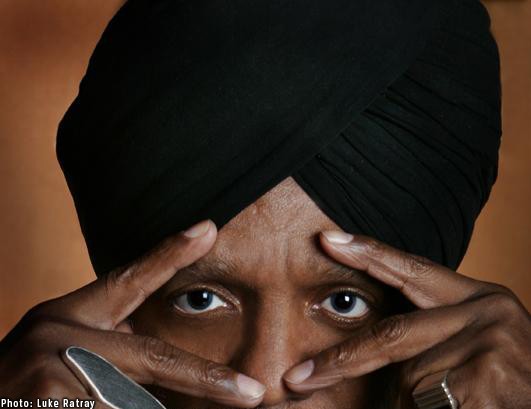
The Hammond B3 organ weighs over 400 pounds. At the height of their popularity, the Spice Girls combined probably weighed less than that but unlike 400 pounds of manufactured girl power, 400 pounds of funk is a very good thing. The electric organ is an oscillating, one-man band, running the gamut from smooth to shrill. Bass pedals allow the organist to provide their own funky low-end and when suited up with an electric guitarist and a drummer, the soul-jazz triumvirate is complete. The soul-jazz genre was a populist sound with compact performances and often recognizable melodies taken from the pop charts.
One of the best jazz organists and pop interpreters is Dr. Lonnie Smith – a turban-wearing, unlicensed practitioner of funk who released a series of backbeat goldmines in the late 1960s and early 1970s that defined the genre. Smith self-released a double album last year revisiting those classic sessions and, if it is possible, sounds stronger now. He will be performing this weekend at the Segerstrom Center's Samueli Hall. Here is a primer on some of the funkiest first-generation jazz organists.
]
Jimmy Smith
“Jimmy & Wes” from The Dynamic Duo (1966)
Jimmy Smith was unquestionably the biggest star of the organ. He released more than 100 records under his own name and was successful enough to run his own club, named after himself no less, in North Hollywood in the 1970s. He played with flash and charisma starting in the 1950s with hardbop masters like Lee Morgan and helped to define the Hammond sound in the 1960s with the help of instrumentalists that included guitarist Kenny Burrell and tenor saxophonist Stanley Turrentine.
Shirley Scott
“Soul Shoutin'” from Soul Shoutin' (1963)
Historically, the jazz world has been a bit of a boy's club. Not surprisingly, the list of successful female jazz organists is short. Trudy Pitts and Rhoda Scott released a fair share of great albums but Shirley Scott was the rightly-anointed “queen of the organ.” Throughout the 1960s, she released albums under her own name that also featured her husband, the afore-mentioned Turrentine. The number of husband and wife jazz teams is even fewer and none of them had the explosiveness of Scott and Turrentine. Dinner parties must have been fun at their house.
[
Reuben Wilson
“Blue Mode” from Blue Mode (1969)
Wilson appeared at the tail-end of the 1960s, releasing a few albums on Blue Note Records that reached for commercial recognition. He got lost in the shuffle only to be rediscovered in the 1990s. His albums are funky and accessible with Blue Mode standing out as one of his strongest efforts.
Brother Jack McDuff
“Tough Duff” from Tough Duff (1960)
McDuff was a self-taught, blues fiend. He was an elder-statesman of the organ scene and his albums ooze with blistering confidence and a gutbucket, down-home vibe that set him apart from the fleet-fingered, hardbop trained organists. He was always reliable for the greasy, slow and low.
[
Dr. Lonnie Smith
“Sunshine Superman” from Move Your Hand (1969)
Smith didn't start out with the turban or the implied higher education. He was just a funky showman with a soulful feel and a great writing style. He and George Benson built their reputations together in the mid 1960s before Benson followed the windchime-rattling breeze of the 1970s and Smith continued on the path of righteous soul. His interpretations of songs by the likes of Donovan, Aretha Franklin and Blood, Sweat and Tears were jukebox hits and solid testaments to jazz's potential for cross-over success with a large record buying public.
See also:
10 Jazz Albums to Listen to Before You Die
25 Greatest Orange County Bands of All Time
@OCWeeklyMusic and like us on Facebook at Heard Mentality.

